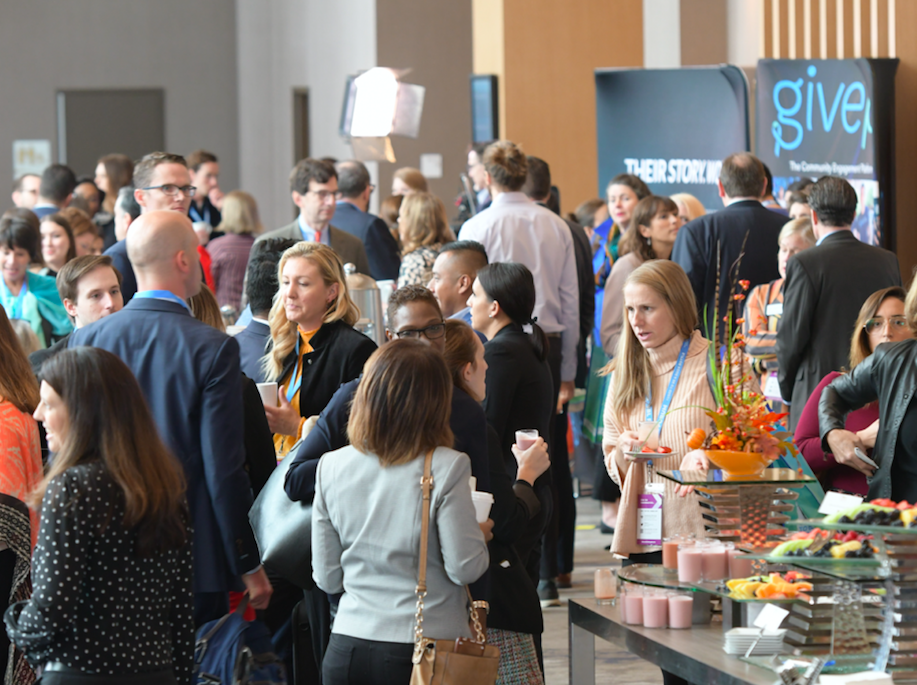California Wildfires: How You Can Help


Wildfires up and down the state of California are leaving nearly 2 million individuals without power and hundreds of thousands more under mandatory evacuation order. Even more residents have been impacted by exceptionally poor air quality for stretches of miles across the state. The fires currently threaten more than 90,000 buildings across an ever-expanding evacuation zone, with strong winds raising the prospect of more fire breakouts and growth of existing blazes. In Northern California, the Kincade Fire has already impacted 74,000 acres, while the Getty Fire in Los Angeles has consumed over 600 acres and counting.
As a company with headquarters in California, this natural disaster truly hits home for PayPal. These are our colleagues, our customers, our partners, our families and our friends. The full devastation of the wildfires will only be known in the days and weeks to come, and we’re coming together as a community during this time of devastation and uncertainty.
Together with PayPal Giving Fund, we have launched a disaster relief campaign to support organizations advancing relief efforts in California. PayPal is covering all processing costs, ensuring that 100 percent of your donation will support charities providing relief and recovery efforts. Through the PayPal Gives program, PayPal will also match donations made by a PayPal employee, according to terms of the program.
Your generosity has helped make a huge difference during times of natural disaster, from when wildfires swept through parts of California last year to when Hurricane Dorian ravaged parts of the Bahamas and North and South Carolina in September.
We’re extremely grateful to anyone who is able to help provide disaster relief to those in urgent need.
Written by John Kunze, SVP, Global Consumer Product & Technology
This story has been previously published in the 3BL Media newsroom and PayPal Stories.
Image credit of Walker Fire in Plumas County, California: U.S. National Forest Service
Stop Wasting Time Looking For the Perfect Cause-Brand Connection—And Other Purpose Lessons You Need
(Image: Ben & Jerry's CEO Matthew McCarthy talks cause-brand connection and what it means to live your corporate purpose at the 2019 3BL Forum.)
The brands taking stands movement reached new heights in 2019. We saw Gillette and Anheuser-Busch air Super Bowl ads with purpose-oriented messaging, Procter & Gamble and LUNA Bar fight for equal pay for women’s soccer players, and brands including Dick’s Sporting Goods, Walmart and Walgreens enter the push for gun safety.
Still, some business leaders view the movement with trepidation. If I speak out on a social or environmental issue, will I alienate potential customers and employees? What about boycotts, should I worry about those? I’ve taken a hard look at my brand and my products, and I just don’t see how they align with purpose. Maybe I should wait until I find the right fit.
Well, Matthew McCarthy, CEO of Ben & Jerry’s—which has taken no shortage of stands in recent years, from voting rights and criminal justice reform to single-use plastics—has some news for you.
“Stop wasting time trying to find the perfect cause-brand fit. Just do it,” he said at the 2019 3BL Forum last week. “What does ice cream have to do with structural racism and social justice? Not a lot, except that we care about it and our team cares about it.”
A brand without a cause is a dead brand walking
Of course, we see plenty of purpose activations that align closely with a company’s products or operations. Look no further than Ben & Jerry’s fellow Unilever brand, Vaseline.
While it may sound strange at first to call Vaseline a purpose-driven brand, it turns out its signature jelly is used by healthcare professionals in developing countries to ward off skin disease—particularly in temporary shelters like refugee camps, where people live in tight quarters and access to sanitation is limited. From this realization, the Vaseline Healing Project was born, and it’s now active in 52 countries, providing medical help to people who are displaced by natural disasters, conflict and extreme poverty.
But we can find just as many purpose missions aligned with the spirit and values of a company, not its products. What do LG electronics have to do with life skills that spur happiness? What do Bridgestone tires have to do with LGBTQ rights? Again, not a lot, but these companies, their teams and their customers resonated with the cause, so they took it and ran with it.
No matter what you do, make sure you do something—or your days may be numbered, McCarthy said. “The biggest under-told story in business right now is that the main reason why so many businesses are struggling is because they're not doing anything to make the world better,” he said at the Forum. “If you're not doing something to help the world, you're probably dead and you just don't know it yet.”
Young people are raising the bar—and it goes way beyond cause-brand connection
As business leaders struggle to find that perfect cause-brand connection, consumers—particularly young people—are already moving beyond this mindset, said Meredith Ferguson, managing director of DoSomething Strategic, the social impact consulting arm of DoSomething.org.
“When thinking about taking a stand, it’s not just about selling your product or aligning with your product anymore,” she said at the Forum. “It’s about using your power, influence and platform to solve the world’s most pressing problems. And we’ve got enough of them that we really need your voice.”
In fact, DoSomething Strategic—which regularly surveys DoSomething.org's young members—has found that taking a stand on causes aligned with your products and operations is simply what’s expected from today’s young people.
“If you’re a clothing brand that isn’t size inclusive, that’s just poor business strategy. Being size inclusive is not taking a stand. That’s just being a responsible business,” Ferguson said. “Young people are saying that is table stakes now. We just expect that of you.”
“Don’t think the cause platform you support has to be in lockstep with what your brand sells,” she continued. “It just has to be in lockstep with what your brand is about from the inside out.”
(Image: Allison Alt (second from right), executive director of Social Impact 360, talks about what young people expect from brands at the 2019 3BL Forum.)
Your stakeholders want to see purpose—and they want to get involved
A 2018 study from DoSomething Strategic indicates that although young people positively recognize brands that take stands, what they're really looking for is a way to get involved. “The easiest way to make an impact on a consumer and an employee is to invite them to be a part,” Ferguson said at the Forum.
Allison Alt, executive director of Social Impact 360, which trains young people to lead purpose-driven businesses, agrees. “What I find in speaking with young CEOs and young business leaders is that meaning and purpose in their daily work is what they are really looking for,” she said at the Forum.
“We’re starting to see more brands stand for something, which is wonderful, because it signals to the next generation that you care about their need to be engaged and passionate in the work they’re doing. But companies need to ask themselves: What am I doing to bring that purpose into everyone’s daily work?”
Curious about how to embed your purpose and live it daily? These insights from business leaders shared during the 3BL Forum will get you off on the right foot.
Another Chapter in Retailer Activism: Aldi Speaks for the Bees


From gun safety to climate change, brands are speaking out as never before on areas of deep public concern. That includes the retail industry. Slowly but surely, retailers are beginning to promote themselves as safe spaces for shoppers concerned about their own health, human rights and the environment. The latest example is the popular discount grocer Aldi.
Retailers push the envelope
Retailer activism is especially evident in the retailer-manufacturer field, where companies like Levi-Strauss can reach deep into their supply chains to foster social progress.
The retailer activism movement also manifests itself in other, often overlapping shades.
One involves creating safe spaces for customers. In 2013, Starbucks began requesting gun owners to keep their weapons out of its stores, regardless of permissive local laws.
Yet another type of retailer activism manifests itself in the sustainability field. For example, Ikea and Walmart brushed aside the political wars over renewable energy and became early adopters of rooftop solar. In doing so, they helped to mainstream controversial new technology and normalize it in the public consciousness.
Aldi speaks up for the bees
That normalization process can take a generation or two (renewable energy is still a political hot potato, for that matter). Nevertheless, the end result is that consumers begin to recognize and appreciate behavior by retailers that are in the vanguard of change.
Consumers also begin to expect more from retailers that lag behind.
A new policy on pollinator protection announced by the U.S. division of Germany’s Aldi supermarket chain illustrates how consumer expectations and retailer activism can work together and accelerate change.
Consumers are becoming more aware of the role of bees and other pollinators in the global food supply, and Aldi’s new policy supports that concern.
The new policy also bolsters Aldi’s brand reputation as it expands its range of organic products.
Last week, Aldi U.S. announced that it will encourage its suppliers to find alternatives to harmful pesticides, specifically those containing the compounds neonicotinoids and chlorpyrifos (CPS), which have been linked to impacts on bee and bird health.
“As a leading grocery retailer, at Aldi U.S., we want to make sure the way we do business also supports our communities, our people and our world,” the company explained in a press release.
Under the new policy, Aldi will encourage its suppliers to practice strategies designed to reduce the use of pesticides and herbicides.
The new policy also prevails upon suppliers to avoid jumping out of the frying pan and into the fire. Aldi admonishes them to refrain from using “regrettable substitutes” for pesticides containing neonicotinoids and chlorpyrifos.
The limits of retailer activism
Aldi is not the first supermarket chain urging growers to begin transitioning out of harmful pesticides. Whole Foods set a high bar several years ago.
Few if any supermarket chains followed in Whole Foods’s footsteps, until last year. That’s when Costco announced a pollinator policy that is very similar to Aldi’s.
Like Aldi, Costco mentions neonicotinoids and chlorpyrifos by name. The company also includes similar guidance on following laws that require the use of certain chemicals.
In addition, the Costco policy issues the same admonition against using “regrettable substitutes.”
That language may seem tepid, but it is highly suggestive. The phrase “regrettable substitutes” is well known in the public health field. It refers to a whack-a-mole situation in which some chemicals are banned, only to be replaced by others that are just as harmful — or even worse.
More to the point, the phrase echoes the “respectfully request” language deployed earlier this year by Kroger and other retailers seeking legislative action on gun safety. It is an indication that supermarket chains are reaching the limits of their ability to change the behavior of their suppliers. They are poised to ally themselves with grassroots activists, and lobby for broad changes in federal policy.
Going beyond bees
The use of hazardous substances in agriculture is just one issue in which retailers could begin to flex their muscles in alliance with other activists.
In another recent development on that score, Lowe’s has just announced an update to its chemical policy.
In addition to banning the use of certain chemicals in carpeting and other goods, Lowe’s will no longer carry pesticides containing neonicotinoids, with the exception of those used for trees and shrubs. The new policy also bans the use of neonicotinoids by the company’s plant suppliers.
With Aldi and Lowe’s now on board, it will be interesting to see if other leading retailers announce similar policies on pesticides - and use their voices to help advocate for changes in federal policy.
Image credit: Pixabay
Facebook vs. Twitter on Political Ads: Who Wore It Better?


Now that Facebook and Twitter have staked out polar opposite positions on political advertising, industry observers are weighing in on the relative merits of each argument. That’s all well and good, but this Facebook vs. Twitter spat avoids the million-dollar question in the social media room: What are leading brands and other commercial advertisers supposed to make of all this?
Facebook vs. Twitter on political advertising
The political advertising controversy blew up last month, when Facebook CEO and co-founder Mark Zuckerberg made it clear that the platform has no intention of fact-checking political advertising.
As if to retort Zuckerberg directly, shortly thereafter, Twitter co-founder and CEO Jack Dorsey announced that his platform is banning all political advertising outright.
Free expression vs. scale of expression
In his argument against fact-checking, Zuckerberg cited the fundamental value of free expression. On closer inspection, though, that value is more relative than fundamental.
The free expression argument also muddies the waters between the constitutional guarantee against repression by government, and the right of private businesses like Facebook to determine what content goes onto their platforms.
Dorsey’s argument in favor of eliminating political ads came closer to identifying the root cause of the problem. For Twitter, Dorsey explained, the fundamental issue is one shared by all social media platforms. Its business model simply does not account for the expense of monitoring content at scale.
“Internet political ads present entirely new challenges to civic discourse: machine learning-based optimization of messaging and micro-targeting, unchecked misleading information, and deep fakes, all at increasing velocity, sophistication, and overwhelming scale,” Dorsey explained in a Twitter thread last week.
In addition to banning overtly political advertising, Twitter is reportedly planning to ban issue advertising. The full policy is set to be announced formally on November 15.
Who will clean up this mess?
Perhaps without intending to do so, Dorsey appears to be leaning in favor of a framework that lifts the burden of fact-checking political advertising from social media platforms and places it on the government, where it would trickle onto the shoulders of the political advertisers themselves.
In this “trickle-down” framework, political advertisers would be responsible for adhering to rules and regulations established by law, much as drivers have to adhere to rules for driving a car. Enforcement and punishment would be the responsibility of law enforcement agencies, not social media platforms.
After all, auto manufacturers are not responsible for enforcing traffic regulations, nor do they enforce licensing, inspection, insurance requirements, or any other area involving drivers.
If this is beginning to sound familiar, it should. Here in the U.S., commercial advertisers are already subject to federal rules and regulations governing claims about their products, through the Federal Trade Commission. Breaking those rules can involve heavy fines and a significant loss of reputation.
Extending that framework to political advertising is a delicate task, but not necessarily an impossible one.
Business Insider political reporter Eliza Relman made just such an argument earlier this week.
After describing the pushback against the political advertising policies of both Facebook and Twitter, Relman wrote that “tech companies wouldn't be in the position of creating policy to counteract this abuse if we had an effective Federal Election Commission, the agency charged with regulating how money is raised and spent in elections.”
When boycotts work
Oversight by the FEC is probably the last thing that either Zuckerberg or Dorsey would want, but it could be something that commercial advertisers welcome with open arms.
Unilever and other leading commercial advertisers have already made known their antipathy for objectionable content in social media platforms, and they have called upon social media companies to do a better job of policing their users.
Commercial advertisers have also been dealing with concerns over objectionable behavior on other platforms, including the media organization Breitbart and certain programming on Fox News.
Leading brands already have enough on their hands without having to deal with the reputational impact of placement in a wild-west environment for political advertising.
In other words, Zuckerberg may have handed commercial advertisers another reason to extricate themselves from Facebook and find alternative ways to engage with customers.
Safe spaces for brand reputation
To be clear, Twitter has also come in for its share of criticism, though to a lesser extent than Facebook.
With political advertising out of its hair, Twitter will still face pressure to moderate user content. That could become a far more complicated task as political influencers seek alternative ways to push out their messages.
Nevertheless, so far the indications are that Twitter is in position to make up for the loss of political ad dollars with an increase in commercial ad revenue, as leading advertisers seek safe spaces in which to promote and protect their brands.
Image credit: Unsplash
Stackable Credentials and Modular Programs Bring More Options to Postsecondary Education


The future of postsecondary education will be modular, stackable and more democratic. That’s according to edX, a nonprofit organization founded by Harvard University and the Massachusetts Institute of Technology, that is re-imagining the postsecondary education model.
In their view, our rapidly evolving economy, fueled by constant advances in technology, requires workers to continually update and refresh their skills to find employment, stay employed, and advance their careers.
Jobs of the future will also be multidisciplinary, requiring a mix of skills which can’t be learned in the traditional setting of today’s college degrees, which focus almost entirely on a single discipline, said Anant Agarwal, CEO of edX and professor of electrical engineering and computer science at MIT.
Therefore, college degrees must become more flexible and customizable, allowing students to stack up learning modules to match their skilling needs, interests and job requirements, Agarwal said. He predicts a future where students will no longer receive a single degree from one university, but rather design their own personalized degrees from many online or on-campus programs.
This type of approach can also “democratize access” to education, Agarwal continued, increasing access to high-quality education for everyone, everywhere.
“Access is often blocked by barriers of time, money and location, and our mission is to break those barriers down,” he told TriplePundit. “We believe education is a human right, and we seek to increase access to it for everyone around the world through our work.”
MicroMasters programs brings flexibility to graduate education
edX has already applied these concepts to its MicroMasters programs, a series of graduate-level courses offered through top universities like the Massachusetts Institution of Technology Thunderbird School of Global Management, a unit of the Arizona State University Knowledge Enterprise , Boston University, Georgia Tech and the University of Queensland in Australia. Launched in September 2016, edX now offers more than 50 MicroMasters programs in popular subjects including cybersecurity, business analytics, data science, artificial intelligence and user experience design.
Students can use their MicroMasters program certificate to start or advance their careers. Upon completion, those who do well can apply the credits they’ve earned toward an on-campus master’s degree at the participating institution, if accepted into the on-campus program.
“The workplace is changing more rapidly today than ever before, and employers are in need of highly-developed talent. Meanwhile, college graduates want to advance professionally, but are realizing they do not have the career-relevant skills that the modern workplace demands,” Agarwal told us. “The MicroMasters program initiative provides the next level of innovation in learning to address this skills gap by creating a bridge between higher education and industry to create a skillful, successful 21st-century workforce.”
According to edX, these programs offer several advantages for students. There are no admissions requirements, and coursework is career-focused so skills learned can be immediately applied in a real-world setting.
The programs are shorter in length compared to a traditional master’s program: A completed certificate is comparable to up to half of the credits needed for a master’s degree in the U.S. (or up to 30 percent in Europe) upon acceptance to a university program.
They are also cost effective, ranging from $600 to $1,500. And they’re very flexible, offered fully online, as either self-paced or instructor-led, and available multiple times per year so students can take the courses at their own pace to fit busy schedules.
Success speaks for itself
edX recently surveyed students who had completed MicroMasters programs, and 87 percent reported positive career outcomes such as changing jobs, getting a raise or receiving a promotion.
Many of these success stories are available on the edX blog. For instance, a student identified as Danaka recently completed her online MicroMasters program credential in supply chain management from MITx before being accepted into MIT’s on-campus graduate program to complete her degree. Her MicroMasters program credential is credit eligible and counts for half of her degree requirements.
Another student, identified as Tobias, works as an investment manager in a firm that funds renewable energy projects. He completed a MicroMasters program focused on solar energy in hot desert climates to help him better understand the challenges and risks of solar investments in these regions. He also appreciated the international nature of the program:
“People from all over the world became my course mates, [and] I enjoyed the discussions and different views,” he told edX.
The next level: Equalizing postsecondary education with MicroBachelors programs
Following up on this success, edX is now designing MicroBachelors programs, a stackable series of courses that learners can take to acquire career-relevant knowledge and gain 21st-century skills. According to edX, these programs will remove learning challenges for working adults, such as cost, time and previous educational experience, and enable learners to advance their careers while also pursuing a bachelor's degree.
Several organizations have already signed on to support the MicroBachelors programs, including the SunTrust Foundation, the Yidan Prize Foundation, the Lumina Foundation, the Walmart Foundation and Boeing.
*This article series is sponsored by SunTrust Foundation and produced by the TriplePundit editorial team.
Image: LinkedIn Sales Navigator/Unsplash
Hiring Formerly Incarcerated People Is Good For Communities (and For Business), Leaders Say


(Image: The secret ingredient in Ben & Jerry's ice cream flavors like Chocolate Fudge Brownie and Half Baked: tasty brownies from Greyston Bakery, which hires formerly incarcerated people and others struggling to find work.)
It’s no secret that the United States has the largest prison population in the world. Nearly 2.3 million Americans sit in prisons and jails at any given time.
The mass incarceration system tears families apart and sends ripple effects across the economy and society, with communities of color being the hardest hit: Though the U.S. population is roughly 13 percent black and 19 percent Hispanic, black and brown people make up 56 percent of those incarcerated.
After decades of jailing people at increasing rates, approximately 1 in 3 U.S. adults now has a criminal record that would appear on a routine background screening.
People with conviction records are often shunned by employers, locked out of housing, and deemed too high-risk for loans and other financial services. In over a dozen states, they can never cast a vote again.
Though over 600,000 men and women come home from prison each year, more than half remain unemployed 12 months later, increasing the likelihood they’ll return. “We set up all kinds of barriers,” said Alexander Alonso, chief knowledge officer at the Society for Human Resource Management (SHRM), which represents over 300,000 HR professionals worldwide.
“Roughly 62 percent of the HR professionals we’ve surveyed admitted they did not know their company’s policy around hiring formerly incarcerated people. As a result, they decided not to hire or to institute their own policy around background checks to eliminate individuals who were formerly incarcerated.”
Experts often cite difficulty finding employment as a primary reason why almost 70 percent of people released from prison are back behind bars within three years. At the 2019 3BL Forum last week, Alonso and other business leaders called on the private sector to shift their thinking around second-chance hiring—and discussed the benefits for both business and society.
Human connections open up new conversations around hiring formerly incarcerated people
Defy Ventures has worked for over a decade to give people a second chance after incarceration. Its seven-month Entrepreneur-In-Training (EIT) program starts in prison, combining entrepreneurship training with career readiness and personal development in a rigorous 1,200-page curriculum. The program culminates in a pitch meeting inside prisons, where successful business people provide feedback and vote on ideas.
“It’s part of our subversive advocacy mission to bring business people into prison, where they’ll actually have a human interaction with somebody who is impacted by the criminal justice system,” Andrew Glazier, president and CEO of Defy Ventures, said at the Forum last week. “These person-to-person moments, these relationships, this human interaction, that's what changes the narrative.”
More than 3,000 people from 22 prisons enrolled in EIT programs last year, and nearly 1,500 graduated. The employment rate for Defy’s post-release program stood at 82 percent in 2018 and, importantly, less than 10 percent of EIT graduates returned to prison.
“Once our folks come out, we have continued mentorship and access to a growing pool of fair-chance employers,” Glazier said. “Business people are so important to this. We cannot solve this problem without business.”
(Image: From left to right: Marcus Glover of M. Glover Capital, Susan Braig of All Broads Affordable Plumbing, Andrew Glazier of Defy Ventures, and Joseph Kenner of Greyston Bakery discuss second-chance hiring at the 2019 3BL Forum.
Open hiring: A bold solution to an economic problem
Getting a job at Greyston Bakery in Yonkers, New York, is as simple as writing your name—seriously.
Greyston pioneered the practice of open hiring back in 1987. Ever since, it has built its team without interviews, job applications or background checks. Applicants simply write their names on a list, and they’re hired on a first come, first served basis—no questions asked. Benefits begin on day one, and new hires go through a seven- to nine-month apprenticeship before becoming full-fledged bakers.
“We always say we don't hire people to bake brownies. We bake brownies to hire people, because that's what the bakery is all about,” Joseph Kenner, vice president of programs and partnerships for Greyston Bakery, said at the 3BL Forum. “We make that investment because we believe in the power of people. As long as they're ready, willing and able to work, we'll make that investment in them without worrying about their past.”
Greyston’s model gives an unconditional second chance to people with criminal justice histories, as well as those experiencing homelessness, substance abuse issues or who are, for whatever reason, struggling to find steady work.
What some may see as a massive risk turned into a reward for Greyston, which now supplies major corporate partners like Delta Airlines and Ben & Jerry’s. The mode has been so successful that Greyston recently partnered with Unilever to launch the Center for Open Hiring, a learning hub focused on the practice.
“I can only hire about 60 to 70 folks at any given time. I would love to see other companies taking that step,” Kenner said. “At the end of the day, this is an economic development issue. This is an innovation that we're talking about here. When we start to place folks in positions, you're making an impact in communities, particularly urban centers, and you're making an impact on your stakeholders.”
From second chances come new opportunities
A year ago, Susan Braig was in prison on a nine-year sentence, of which she ultimately served five and half years. “During that time, I took a lot of days reexamining the path that I took in life, every poor choice I made, where I went wrong or could've changed things,” she remembered. Then, she entered Defy’s EIT program. “It made me stop questioning my poor choices in the past and start thinking about my future,” she said at the Forum last week. “It changed my life.”
Braig now runs All Broads Affordable Plumbing, a Connecticut plumbing company staffed entirely by women with criminal justice histories, and she’s just getting started. “I would like to start an education program for young women and girls to get them into the trades,” she said. “Nobody is going into the trades.”
Her inspiring story shows not only what’s possible with the help of education and investment programs like Defy’s EIT, but also the untapped potential that employers routinely leave on the table—to their own detriment and that of society.
At the 3BL Forum, Braig summed up the conversation around second chances by asking the audience to think about the worst thing they’d ever done. “Now imagine having to put that on your business card, a job application, talk about it to an HR person when you're about to be hired,” she said. “That’s what people leaving prison face.”
“I do everything I can to help men and women coming out of prison, because it's important,” she concluded. "They're part of our society. I'm part of our society.”
Image credits: Ben & Jerry's, 3BL Media
Tech Companies Still Lagging on Sustainability Leadership


The technology industry has been under much scrutiny in recent months. Facebook’s treatment of political advertisements has been put under the microscope, another pitfall for the company as it still struggles in the wake of criticism it has received for its role in the meddling of the 2016 U.S. presidential election. WeWork – which is more of a real estate company but one that catered to tech companies and startups - saw its attempted IPO fail quite spectacularly. Other tech companies have seen their feet held to the fire over various issues: Google has found itself mired in controversy over immigration, Amazon employees felt their company could do better on climate action, and Uber and Lyft have raised eyebrows over data suggesting that they’re responsible for more cars on the road instead of less.
According to the American Center for Sustainability and Excellence (CSE) the lack of strong sustainability leadership is endemic across many of the world’s leading technology companies. The CSE’s study found that only 37 percent of companies report on their climate change performance, while only 23 percent explicitly mention the Sustainable Development Goals (SDGs) in their reporting. Despite a vocal outcry that the tech sector’s responsibility should grow with the power that they accumulate, there is still a long way to go for that scenario to become a reality.
Understanding the benefits of sustainability
Tech companies largely understand that millennials are their most important demographic, but there is a clear disconnect in terms of priorities.
The study notes that many Silicon Valley companies did not include sustainability as part of their core strategy as recently as 2016; meanwhile, millennials have increasingly expected companies to lead on social issues. This gap in priorities is certainly closing, but not up to the standards of innovation set by the industry itself.
The overall sustainability score for the industry comes in at 50 on a scale of 100 on CSRHub, which is considered an average mark. The average active sustainability scores lie at 17, which is also considered average. For an industry that prides itself on pushing the envelope, the middling results should be troubling.
Following the money doesn’t always pay off
While there has been a very real shift in the actions of executives on the topic of sustainability, there has long been a perception in the C-suite that being more socially conscious isn’t a priority for shareholders. The study notes that angel investors’ and venture capital’s inherent focus on quick returns and exit strategies doesn’t help incentivize a strong long-term sustainability strategy.
That perception, however, is becoming outdated.
Investors have begun to see that reporting on sustainability is actually beneficial to an organization. That knowledge has put topics of environmental, social, and governance issues at the top of the list of priorities for executives at some of the largest investment firms in the world. That fundamental shift allows for rapid progress to be made, as executives of tech companies now have even more incentive to understand how they can have an impact, for better or worse, on society.
Progress is being made - somewhat
While concerns still exist, this report notes that of the 100 companies surveyed, 60 percent have a sustainability report, up drastically from 29 percent in 2016. Of those 60 percent that do have a report, 50 percent used Global Reporting Initiative (GRI) reporting standards.
Focus on environment and community may have been lacking in the report from 2016, but they have significantly improved in the three years since, rising from a 63 percent to 98 percent focus on the environment, and a jump from 51 percent to 66 percent on community engagement. Emphasis on philanthropy and supply chain has increased as well, while any drives to improve ethics and employee engagement have remained largely steady.
This upward progression, along with the recent shift in investor attitudes, shows a clear reorientation toward more sustainable practices not only in management, but in applications of leading-edge technology as well. Overall, the technology industry is making strides on social impact with advancements such as artificial intelligence and blockchain. Companies are weighing the broader social implications as well as financial potential in new technologies and innovations, a clear positive trend.
Ultimately, sentiment is changing around sustainability as a core part of an organization’s strategy. The question is, can the technology sector keep improving – and eventually, even lead?
Image credit: Riccardo Annandale/Unsplash
Investing in Career Development Helps Companies Attract, Keep and Promote Top Talent


In today’s tight labor market, companies cannot afford to ignore untapped reservoirs of smart, motivated potential employees. Yet many have just such a pool of talent right before their eyes. By innovating on outreach, continuing education and career development, some companies are finding new ways to ensure their workforce is the best it can be—and that can mean a more diverse workforce, as well.
Diversity and outreach
Reaching jobseekers outside of the traditional hiring pool is one area in which some companies have excelled. The waste hauler Republic Services, for example, realized a range of benefits after it recruited female school bus drivers to its formerly all-male roster of truck drivers.
Appealing to jobseekers by proactively creating an inclusive, supportive environment is another effective strategy, as demonstrated by the LGBTQ initiatives of the global firm Accenture.
One key area in which progress seems to have stalled, however, is racial diversity. More companies are talking about diversity more openly, but there is still a persistent bottleneck in hiring and promotion.
In this regard, JetBlue’s employee education and career development initiatives offer an example for companies seeking to walk the diversity walk.
Higher education’s diversity problem
Racial disparity in college degrees is one key obstacle for companies seeking to diversify their workforce, especially at the managerial and executive levels.
The problem is not just about access to college. For those who do go to college, data show that black and Hispanic students disproportionately never complete their degrees, or they receive diplomas from less competitive schools.
As a result, they are more likely to enter the workforce with some college credits but no college degree, or with a degree that does not help them advance professionally.
This issue also has an impact on the U.S. workforce overall. More than 36 million adults have some college credits but no degree. Many cannot return to school full-time because they need to pay down college debt or have family commitments that make a degree seem out of reach.
Additionally, in today’s rapidly changing job market, consistent up-skilling is necessary to ensure advancement—even for those with four-year degrees. At least 54 percent of all employees will need re-skilling and up-skilling by 2022, yet those who need it most are often the least likely to receive it, the World Economic Forum noted earlier this year.
How companies can fill the gap with career development
JetBlue credits its employees with sparking ideas for a path forward. The company launched its JetBlue Scholars program in 2016, in response to employees seeking help in completing a bachelor’s degree.
JetBlue took a hard look at the cost obstacle and developed a comprehensive program that helps employees to overcome it.
This program, however, goes far beyond simply offering tuition reimbursement. Participating employees attend college primarily online, eliminating costs associated with campus life while adding flexibility in scheduling. They are also eligible for financial aid, and they can convert qualifying professional certificates and work experience—including aviation and military experience—into college credits.
In addition, JetBlue Scholars enrollees receive hands-on guidance both within their company and from the college, allowing them to tailor their degree programs for maximum professional and career development.
Most importantly, JetBlue Scholars attend high-quality schools. JetBlue’s launch partner in the program is Thomas Edison State University, part of New Jersey’s highly-rated network of public universities and colleges. TESU is designated as this network’s adult school, meaning it’s a perfect match for the needs of older working students.
 Image: JetBlue works with highly rated institutions such as Thomas Edison State University on its career development program for employees.
Image: JetBlue works with highly rated institutions such as Thomas Edison State University on its career development program for employees.
Beyond a bachelor’s degree
The JetBlue Scholars Program was a success from the beginning. Within its first year, 50 JetBlue employees completed their college degrees, including pilots, reservation agents, flight attendants, mechanics and administrative staff.
This year, JetBlue is taking it to the next level with a new master’s degree program at discounted and affordable rates in partnership with TESU and other universities in New York, Louisiana and Maryland. Also included is Western Governors University, a multi-state educational partnership that gives classes online.
As with the JetBlue Scholars program, the idea of an advanced degree program came in response to inquiries from JetBlue employees.
The airline also stands to benefit: The new JetBlue Scholars Master’s Pathways program is aimed at enabling the company to promote more workers from within—an important consideration for employers seeking to retain valued employees in a tight job market.
“As you move up in an organization, you have the technical training and experience in corporate culture, but you might not have the educational background to move to the next level,” says Dr. Dennis W. Devery, TESU’s vice president for enrollment management.
The vocabulary of managers and executives is one of the key stumbling blocks for those looking to climb up in the ranks, he says. “Employees have told me that [executives] are talking at a level they don’t understand,” Dr. Devery explains. “As you move through an organization, there are nuances that have to be learned through education—and while you’re getting that degree, you’re starting to learn the higher-level issues of management and learning the vocabulary of organizations at senior levels.”
Investing in people
The JetBlue model provides other companies with a pathway for demonstrating that their diversity efforts are more than just words on a webpage.
Though the company’s educational and career development initiatives did not begin with a focus on diversity alone, they are an expression of JetBlue’s core values around inclusion. In particular, the company’s approach to diversity translates into a concerted effort to “appreciate, respect and value crewmembers’ points of view across the spectrum.”
The cornerstone of JetBlue’s success is listening to employees from all walks of life—and responding to their concerns and aspirations in a concrete, effective way. Companies seeking to replicate JetBlue’s educational and career development programs would do well to start there.
*This series is sponsored by JetBlue and produced by the TriplePundit editorial team.
Image credits: Pixabay, Flickr/Gov. Phil Murray
For this ESG Professional, 3BL Forum Was Inspirational and Aspirational


I attended this week’s 3BL Forum themed Brands Taking Stands – What’s Next and heard from more than 90 corporate responsibility professionals and experts from NGOs over two amazing days.
Given this is the height of conference season and we can’t all be everywhere, I wanted to share a few of the learnings and comments that I found particularly insightful. Enjoy!
Does it ever feel like you are being pressured to sign on to every petition and join in every cause? Well Eileen Boone, EVP of Corporate Social Responsibility, CVS Health, thinks differently. She shared with attendees her perspective: “Just because it’s the issue of the day doesn’t mean you have to jump in…If you can’t bring resources to the issue , don’t do it. People will see it’s not authentic.“
Whoever said CSR was easy? “Being in the CSR space, is a challenge. Every side of every issue is going to get more sophisticated going forward,” said Tim McClimon, President, American Express Foundation and SVP, American Express.
Timberland shared details of its recently launched Nature Needs Heroes campaign which seeks to inspire a greening movement among consumers. What’s different about the campaign is that it involves consumers. “The campaign is a call-to-action to engage people in small, everyday actions that make a difference and help create a greener world,” Atlanta McIlwraith, Senior Manager of Community Engagement and Communication, Timberland, shared. "The small actions add up, and as many people do small actions, you get a movement—and it is movements that change the world."
Is it possible for a perfume to solve the world’s greatest challenges? According to Kip Cleverley, Vice President of Global Sustainability at International Flavors & Fragrances (IFF), it is. Speaking during the first day of 3BL Forum, Cleverley shared his company’s pursuit to focus not simply on doing less bad – for example, by reducing water use, something they have done – but by doing more good. And what’s really cool is he’s working with actress and environmentalist Michele Pfeiffer to do it. Curious? Read more in my recent coverage.
Perhaps my favorite speaker of the Forum – and not just because he gave out free ice cream to all attendees, although that certainly helped – was Matthew McCarthy, CEO of the iconic brand Ben & Jerry’s, who said “If your company is not doing something to deal with a global issue it is probably dead.”
While I am all for plant-based diets, I was interested to hear from Stewart Leeth, VP of Regulatory Affairs and Chief Sustainability Officer at Smithfield Foods, that they are working with local farms in their supply chain to convert manure into biogas to create a second revenue source for struggling U.S. farmers.
Amanda Gardiner, Director of Social Responsibility at Verizon, announced that the company is working on a new CSR framework that will be based on “radical transparency” and partnerships and will include new targets. Not surprising given the refreshing focus on CSR by their new CEO Hans Vestberg. Watch out for an announcement next year.
According to the new 2019 Porter Novelli/Cone Gen Z Purpose Study shared at the Forum, Gen Zers believe they are the key to pushing forward on the world’s top social and environmental issues, from climate change to gun control. And they are willing to roll up their sleeves and participate. Around three-quarters stand ready to support companies that care in a variety of ways, including: sharing their positive opinion about a company doing good (85 percent), buying a product with a social or environmental benefit (84 percent) and learning what they can do to make a difference (also 84 percent). Check out my article on 3p for more details.
Alicia Chin, Senior Manager of Social Impact and Growth Initiatives at the NHL, shared how the League is helping local ice rink operators and owners invest in new sustainable, energy efficient technologies so they can stay open. And the NHL is offering tips on how fans can be more sustainable in their lives. Very cool.
And last but not least, I loved a quote from Mona Amodeo, Author of Beyond Sizzle: The Next Evolution of Branding, who said she likes to think of the shift in focus from “looking at a company’s environmental footprint – measuring negative impacts -- to focusing on their environmental handprint – measuring positive impacts.”
Electric and Self-driving Cars Must Still Win Consumers' Trust


Electric and self-driving cars, to many observers, will be an inevitable of transportation systems worldwide. But that sentiment isn’t held by all, or even most, people. Unease was expressed extensively in a recent survey by JD Power, showing a “Mobility Confidence Index” at 36 (100-point scale) for self-driving cars, and 55 for electric cars. Both are troubling figures for automakers and tech companies in the space, yet there are pros and cons to the findings.
Companies such as Tesla have paved a new path in the auto industry, which is inherently a positive, but the concern over public safety and viability of these products stand in question. While these advancements are to be commended, it’s also important to note that they are far from finished products, still in either a test phase or nestled in as a niche market.
Mistrust over self-driving cars needs context
Self-driving cars are a new and unproven technology. People inherently don’t trust what they don’t know, and 68 percent of respondents have “little to no knowledge about self-driving vehicle technology.” That is to be expected with a new technology that stands to fundamentally change the way we traverse the world around us.
The survey cites that problem is “proving more challenging than originally thought.” These delays, along with the accidents that have been well publicized, have turned public sentiment against the technology. The fact is, there is no real basis for either end of the debate. We’re unsure if self-driving cars will prove to be an improvement over human drivers. 90 percent of accidents are caused by human error, so in theory, this technology will save lives.
There are too many factors that play into testing to accurately quantify whether or not assumptions made by advocates for electric and self-driving cars are true. A great deal of context needs to be assessed in reviewing the data that already exists, such as where testing has happened and the variety of tasks the car does. More research needs to happen, more advancements need to be made, and more people need to be educated by the companies that are working on the technology to speed up the timeline for which self-driving cars become mainstream.
Viability of electric cars is growing quickly
Electric cars pose a slightly different challenge for consumers, but still suffer from the same broader trends. Investments in electric cars have jumped drastically, up to $90 billion, as exemplified by Ford’s investment in Rivian earlier this year. Investments continue across the global automotive sector, and they are being funneled less into concept cars and more into consumer-viable cars, meaning the shift from niche to mainstream is beginning.
That growth is encouraging, but it’s also worth noting that electric cars made up less than one percent of the 90 million cars sold annually. Challenges abound; the auto industry is one of the most difficult industries to permeate, and until more mainstream companies that consumers trust begin making electric cars a part of their core offerings, enthusiasm will be tempered for some time.
That being said, innovation has struck the electric car and battery sector like a bolt of lightning. Tesla has recently announced the launch of a battery that the company says can last a million miles before it wears out, more than double the current leading battery capacity. This advancement has to be understood by the public for it to move confidence numbers up, and the JD Power study only emphasizes that point.
The reality of innovation
Many would like to believe that the leaps and bounds made through technology happen instantly, a sudden breakthrough catapulting us to new heights. The reality tells a different story, and this particular anecdote is no different. Electric cars have struggled as an affordable option for the masses, and are just beginning to become mainstream options, with a charging network just starting to expand to an acceptable degree.
Self-driving cars are even further behind, more theoretical than practical at this stage. The technological and regulatory challenges that exist won’t be easy to solve, and with the scrutiny many in this industry have faced, such as Uber and Tesla, the bar seems even higher.
In sum, the JD Power survey offers several lessons – and questions.
At the macro level, we know that technological innovation involves a great deal of gray area. There are clear financial and societal benefits to be reaped from these advancements, but these particular examples make it clear that there will inevitably be shreds of doubt that exist. Adaption is an inherently difficult thing to do and expecting consumers to shift to electric cars quickly is hardly a good bet.
Consumers will continue to have more questions in the years ahead.
Why is this technology an improvement over the current state of affairs? Is it a noticeable enough improvement to warrant large-scale investment? How will it alter the landscape of the community with which it resides?
These questions lie at the feet of the organizations that pursue these advancements. These surveys make it clear that companies that are pursuing self-driving and electric cars not only have technological hurdles, but marketing hurdles. The technology may be ground-breaking, but consumers also need to believe it’s ground-breaking.
Image credit: Vlad Tchompalov/Unsplash